Head-To-Head: Lenovo ThinkPad X1 Carbon Vs. Microsoft Surface Pro
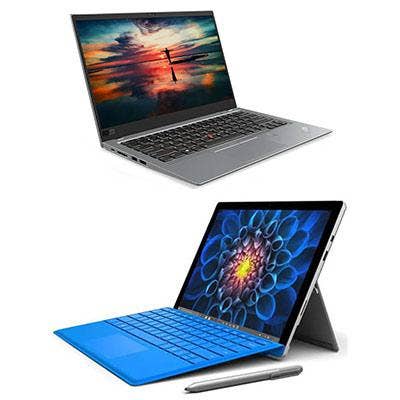
Face Off
If you're looking for the best Windows 10 device available for staying productive while on-the-go, you'll want to check out the latest offerings in the popular X1 Carbon and Surface Pro lineups. Microsoft's most recent Surface Pro and Lenovo's sixth-generation ThinkPad X1 Carbon each offer the rare combination of a great display, strong battery life and performance, and a highly portable form factor.
Which of the two devices is the better fit for you? In the following slides, we compare the key specs and price for Lenovo's 6th gen ThinkPad X1 Carbon vs. Microsoft's latest Surface Pro.
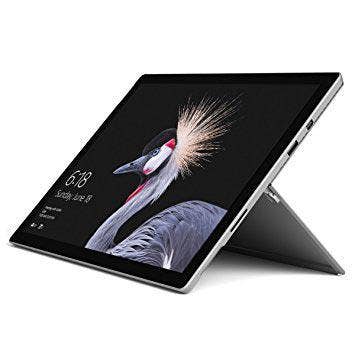
First Things First
While both devices in our comparison are indeed highly portable, they're actually of a different class from each other: the Surface Pro is a 2-in-1 device (available either as a standalone tablet or along with a detachable keyboard/cover), while the ThinkPad X1 Carbon is a clamshell notebook with a display that doesn't fold all the way back. The X1 Carbon does feature an optional touch screen display, as we'll see.
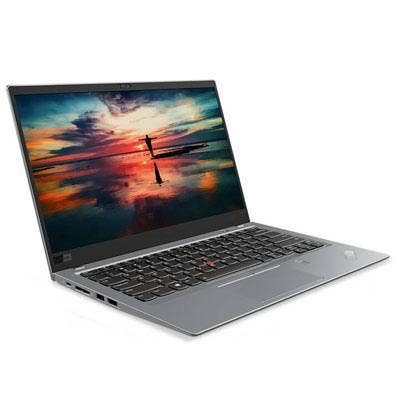
Display
Another notable difference right off the bat is on display size. The ThinkPad X1 Carbon features a 14-inch display, which makes its screen 14 percent larger than the 12.3-inch display of the Surface Pro. The X1 Carbon also has a number of display options, which differ in terms of resolution and brightness, while the Surface Pro has just one display configuration: 2,736 x 1,824 resolution and brightness of about 400 nits.
That resolution is higher than any of the options for the X1 Carbon, which top out at 2,560 x 1,440 pixels. Within that resolution, the X1 Carbon has two options, both of which are non-touch -- one with brightness of 300 nits, and another with brightness of 500 nits and Dolby Vision HDR technology.
The two additional X1 Carbon configurations are for touch screen and non-touch displays, both with 1,920 x 1,080 resolution and brightness of 300 nits.
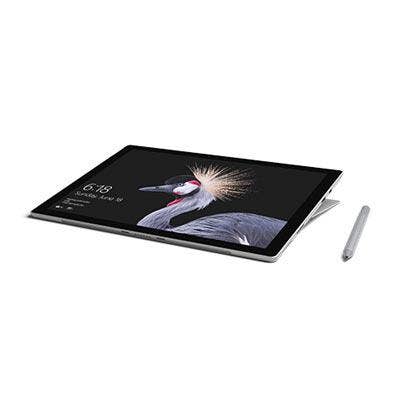
Thickness & Weight
As mentioned, one of the biggest advantages of either device in our comparison is on portability. The Surface Pro has a significantly lower footprint all-around with its smaller display than the X1 Carbon, and it's lighter too -- though not by much. The Surface Pro weighs 2.37 pounds for the tablet with Type Cover, making it one of the lightest options out there for a productivity device. The X1 Carbon, however, weighs only a bit more at 2.49 pounds -- an impressive feat for a business notebook.
The Surface Pro with Type Cover is a noticeable amount thinner at 0.53 of an inch thick, while the X1 Carbon measures 0.63 of an inch on thickness. With either device, traveling is going to be a much-improved experience thanks to their highly portable designs.
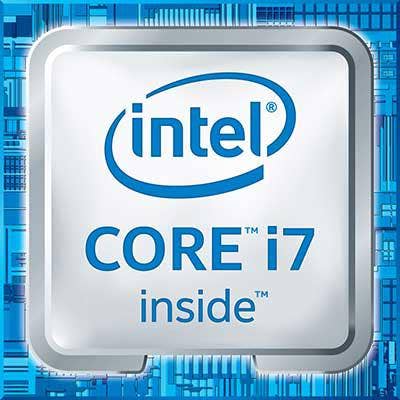
Processor
A big part of the appeal of these devices comes from the fact that they combine strong performance with portability (whereas many other devices make you choose between the two). The ThinkPad X1 Carbon is more recent to market, and thus benefits from newer processors that are generally faster than those available in the Surface Pro.
At the top level, the X1 Carbon is available with the speedy eighth-gen Intel Core i7-8650U chip (quad-core, clock speed of up to 4.2Ghz). The notebook can be configured with three other choices as well -- a different Core i7 (up to 4GHz) and two Core i5 options (up to 3.6GHz and 3.4GHz) -- all of which are quad-core.
As the Surface Pro debuted roughly a year ago, it includes the seventh-gen Intel processors, which are still speedy but not clocked quite as high (and don't feature as many cores). Those are the Core m3 processor (clock speed of up to 2.6GHz), Core i5 (up to 3.5GHz) or Core i7 (up to 4GHz) -- all of which are dual-core processors.
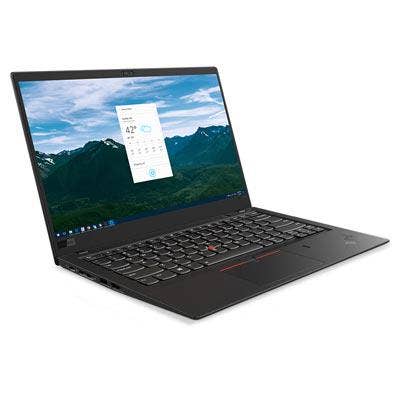
Battery Life
A device can't "have it all" without offering long battery life. And both devices in our comparison do promise lots of usage between charging: The X1 Carbon comes out ahead with up to 15 hours of battery life on a charge, but that's for the FHD model (the higher-res, 500-nits model won't likely fare as well, though Lenovo doesn't provide an estimate). The Surface Pro comes pretty close, with Microsoft promising up to 13.5 hours of usage per charge. That's an impressive amount for a thin tablet with a display that is higher-res and brighter than the base-level X1 Carbon.
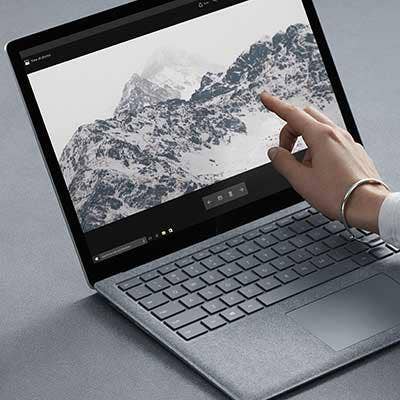
Ports
Both of the devices in our comparison offer a range of port options, though the ThinkPad X1 Carbon is more generous. The X1 Carbon comes with two USB-A ports, two USB-C/Thunderbolt 3 ports, a microSD card reader, HDMI and a docking connector for native Ethernet.
The Surface Pro, on the other hand, doesn't offer USB-C connectivity. What the tablet does have is a USB-A port, along with a Mini DisplayPort and a microSD card slot.
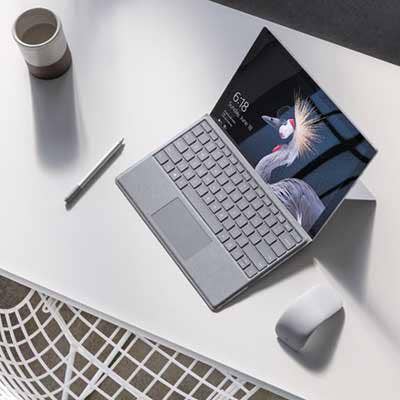
Special Features
The Surface Pro includes a few elements that differentiate it from the X1 Carbon. For one, the Type Cover is available in a "Signature Edition" with Alcantara fabric around the keys and touchpad. The tablet is also intended for use with the Surface Pen (sold separately), whereas there's no indication that the touch screen model of the X1 Carbon supports a digital stylus.

Price
Microsoft doesn't offer the Surface Pro tablet paired with the Type Cover, so buyers will need to factor that in when comparing the Surface Pro with Lenovo's ThinkPad X1 Carbon on price. There are two Type Covers for the Surface Pro -- a basic Type Cover for $130 and the "Signature Edition" for $160 with Alcantara fabric.
We'll assume that you aren't interested in the entry-level Surface Pro with a Core m3 processor (too slow), and skip to comparing the Core i5 models of the two devices. With Core i5 and 256 GB of storage, the Surface Pro with the basic Type Cover is priced at $1,429 -- which actually makes it more expensive than the X1 Carbon, which costs $1,367 for a comparable configuration. For that pricing, keep in mind that you get a higher-res, brighter touch screen display with the Surface Pro, but a faster Core i5 processor with the X1 Carbon. Adding touch capabilities to the X1 Carbon costs another $85, while getting the higher-res display costs another $138 or $180 (for 500 nits and Dolby Vision, in the latter case).
If you're looking for the fastest processing power available, the X1 Carbon with Core i7-8650U is priced at $1,632. The Surface Pro with Core i7 and the basic Type Cover will still be more expensive, at $1,729.